Why go to all the trouble of inventing a heist to make a movie about when you could rip one straight from the headlines? That, it seems, is why the following stories proved sufficiently juicy to inspire filmmakers to put them on the big screen. But here are the stories behind the headlines, the tales that inspired the movies. Sometimes, believe it or not, they're too bizarre even for Hollywoood...
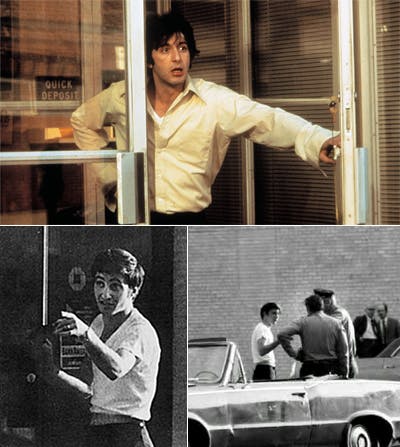Inspired:%20***Dog%20Day%20Afternoon%20(1975).%20Directed%20by%20Sidney%20Lumet,%20starring%20Al%20Pacino%20as%20Wojtowicz%20(%22Sonny%20Wortzik%22%20in%20the%20film?auto=format&w=1440&q=80)
Heist Date: August 22, 1972.
Location: Chase Manhattan bank on the corner of East Third Street and Avenue P in Gravesend, Brooklyn
Takings: None; the robbery was unsuccessful
The Perpetrators: John Stanley Wojtowicz, Salvatore Naturile and Robert Westenberg
Motive: Love? John wanted to pay for his lover Aron's sex reassignment surgery
The Story: Wojtowicz, Naturile and Westenberg, attempted to rob a branch of the Chase Manhattan bank. But Westernberg fled before the robbery was underway after seeing a police car on the street, and it was left to Wojtowicz and Naturile, who held seven Chase Manhattan bank employees hostage for 14 hours. Wojtowicz was arrested, but Naturile was killed by the FBI during the final moments of the incident. On trial on April 23, 1973, Wojtowicz was sentenced to 20 years in Lewisburg Federal Penitentiary, and served 10.
Fun Facts:
- Wojtowicz made $7,500 selling the movie rights to the story and 1% of its net profit. He finally helped finance Aron's sex reassignment surgery with these funds.
- Before robbing the bank Wojtowicz had watched The Godfather and apparently based his plan on scenes from the movie.
- Robert Barrett, the bank manager, said that the interaction between the robbers gave him more laughs in that one night than he'd had in weeks. Shirley Bell, a teller, claimed that the pair would have made hilarious houseguests.
- Wojtowicz wrote a letter in 1975 to The New York Times, concerned that people would think that Dog Day Afternoon was faithful to the facts. He claimed it was only 30% accurate.
- They made at least 2 documentaries about Wojtowicz: The Third Memory in 2000 and Based On A True Story in 2005.
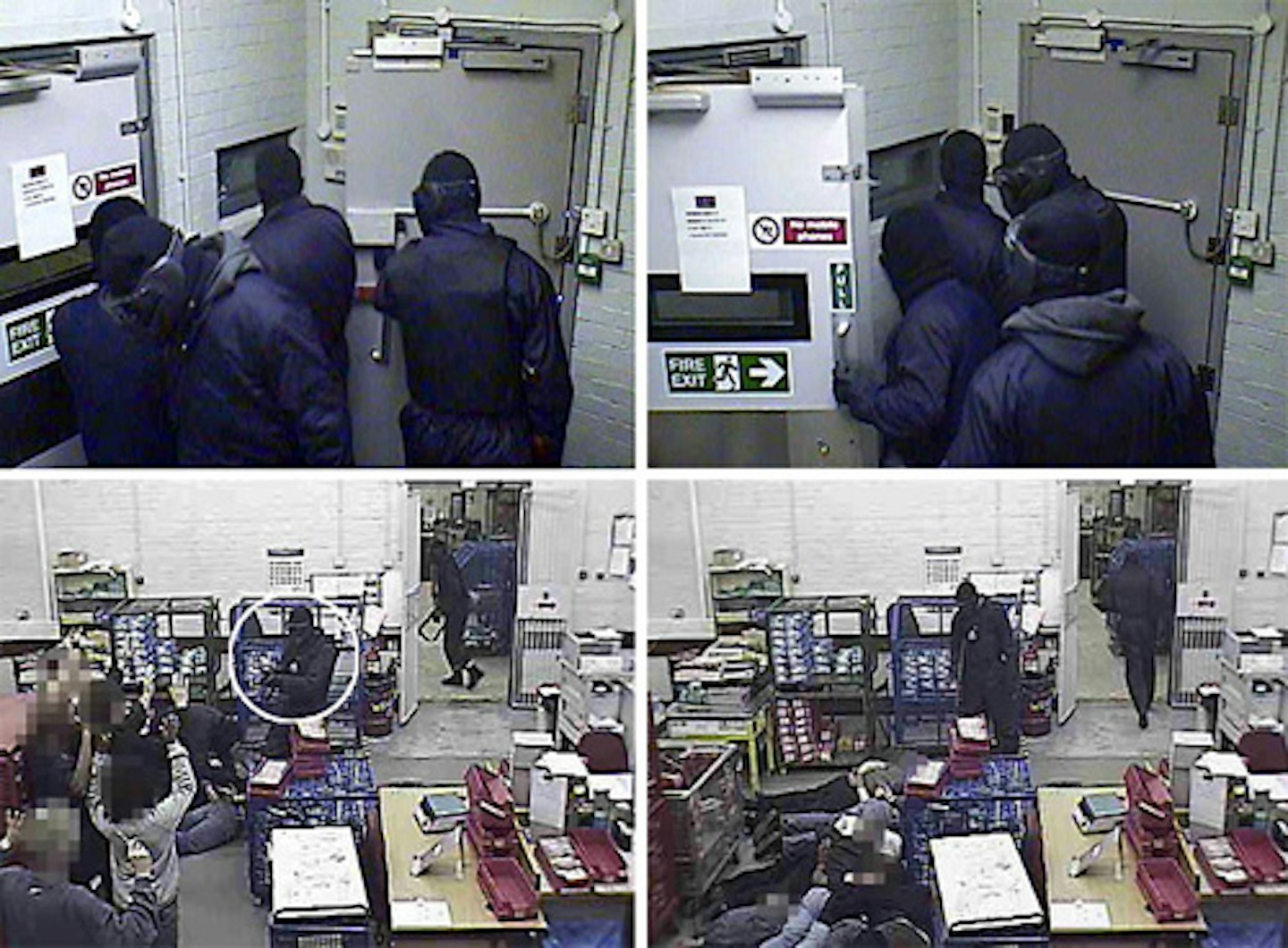
Heist Date: February 21, 2006. 18:30 onwards.
Location: Securitas Cash Management Ltd depot in Vale Road, Tonbridge, Kent
Takings: £53,116,760 in bank notes.
The Perpetrators: Stuart Royle, Jetmir Bucpapa, Roger Coutts, Lea Rusha, Lee Lamrani, Ibrahim Murray and Emir Hysenaj
Motive: Financial. Perhaps they needed to buy a Caribbean island or something?
The Story: The depot manager, Colin Dixon was abducted at about 18.30 on February 21. His car was pulled over near Maidstone by what he thought was an unmarked police vehicle.
As this happened, his wife and son were taken hostage at their home in Herne Bay, having answered the door dressed to people in police uniform. They were then driven to the farm where Colin was being held, and he was told failure to cooperate would endanger his family.
The manager and his family were driven at gunpoint in a white van to the Securitas depot in Tonbridge around 01:00. At the depot 14 members of staff were tied up by men in balaclavas wielding AK47s and handguns.
Around 02:45 the robbery came to an end, the staff and Colin's family were left locked in cash cages. One staff member had a key to unlock her cage and was gradually able to free everybody else. Police officers arriving about an hour later discovered the family and staff bound but physically unharmed.
Fun Facts:
- The Bank of England, to which the money belonged, was reimbursed £25 million by Securitas the same day
- Securitas and their insurers offered a £2 million as a reward for information leading to the robbers' capture.
- So far, the only larger cash robbery in history was in March 2003, when approximately $1 billion was stolen from the Central Bank Of Iraq when the US began bombing Baghdad.
- By the end of the year, Kent Police's investigation costs had exceeded £6 million. They requested financial aid from the Home Office.
*Inspired: *Robbery (1967), Directed by Peter Yates and starring Stanley Baker, Joanna Pettet and James Booth. And Buster (1988). Directed by David Green and starring Phil Collins, Julie Walters and Larry Lamb. It’s a comedy drama that deals with the experiences of Buster Edwards after the robbery.
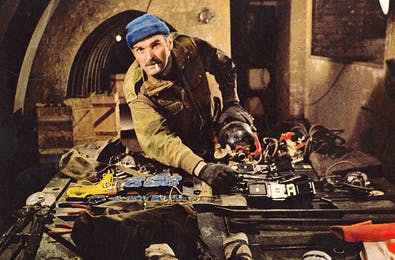Robbery%20(1967?auto=format&w=1440&q=80)
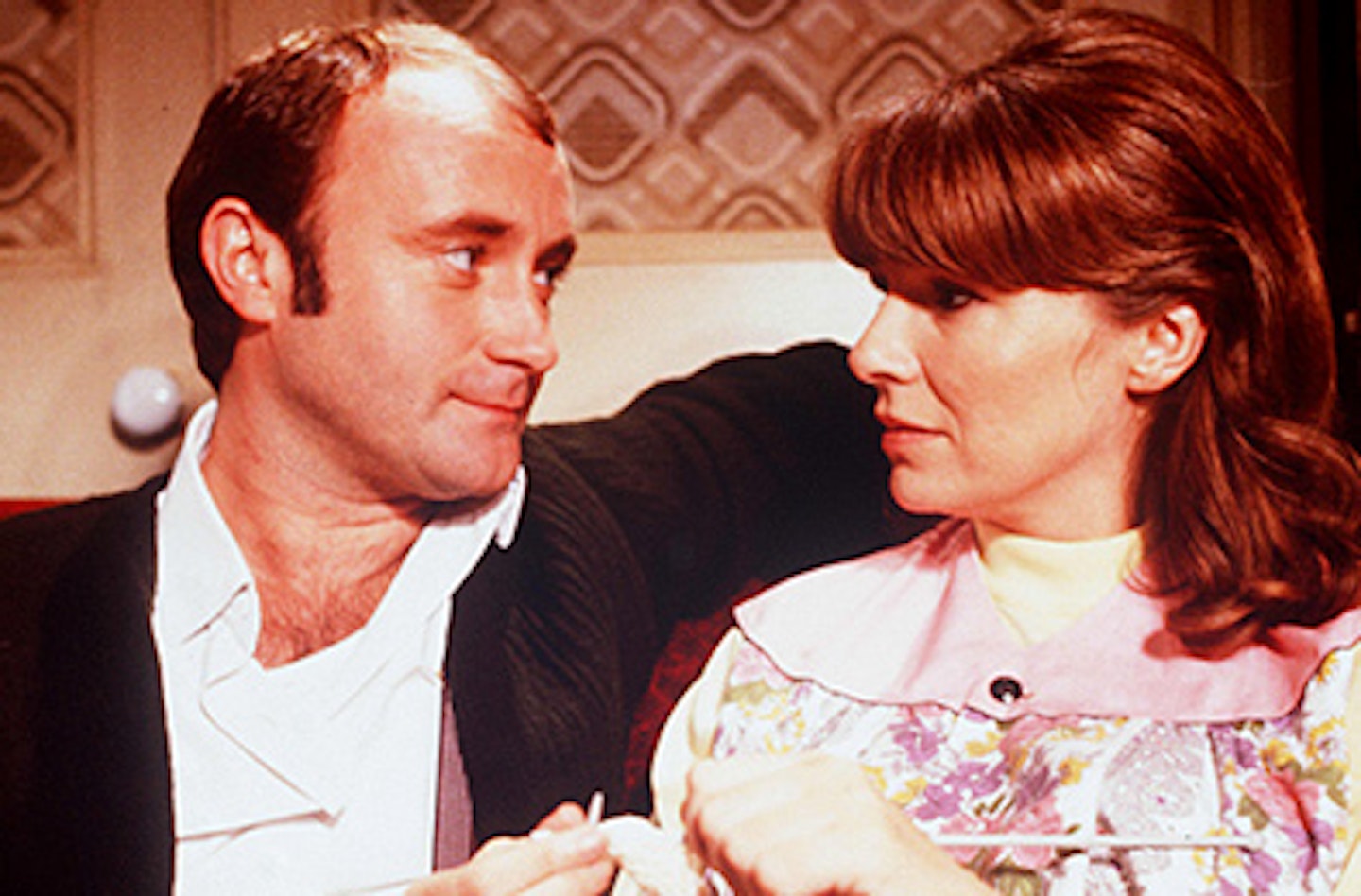
Buster (1988)Heist Date: 8 August 1963
Location: Bridego Railway Bridge, Ledburn, in Buckinghamshire, England
Takings: £2.6 million
The Perpetrators: Bruce Richard Reynolds, Gordon Goody, Charlie Wilson, Ronald Christopher “Buster” Edwards, Brian Arthur Field, “The Ulsterman”, Roy James, John Daly, Bill "Flossy" Jennings, Jimmy White, Alf Thomas, Roger John Cordrey, Bob Welch, Tommy Wisbey, James “Big Jim” Hussey, Frank Monroe, Ronald Biggs
Motive: Financial.

On 31st July, gang members met with the Ulsterman for a final strategy meeting in Hyde Park. At 6:50 p.m. on Wednesday 7 August 1963 the travelling post office (TPO) train set off from Glasgow Central Station, headed towards Euston Station in London. The second carriage behind the engine was known as the HVP (High Value Package) coach. It contained valuables including large quantities of money (following a Bank Holiday weekend in Scotland). The total on the day of the robbery was much higher than normal, about £2.6m
At just after 3 a.m. the driver stopped the train at a red signal light in Ledburn. He was unaware that the signal equipment had been modified by the robbers. They'd covered the green signal light and connected a battery to power the red signal light. The robbers then (with some difficulty) moved the train to Bridego Bridge, approximately half a mile further along the track.
At Bridego bridge the train was stopped again and the robbers' stormed the HVP carriage. Postal staffs were hit with various coshes when they made a vain attempt to stop the robbers. There were no police or security staff present. The robbers managed to steal all but 7 of the 128 sacks from the HVP carriage. It took them about 25 minutes to transfer them to a waiting truck. They then departed about 30 minutes after the robbery had begun in 2 Land Rovers, both with identical plates, along with the truck they had loaded the sacks onto.
Fun Facts:
- The bulk of the stolen money was lost for good. Less than £400,000 pounds was eventually recovered
- The unknown "Ulsterman", who was a vital informant for the thieves, was never identified or caught
- Though the robbers had cut all the telephone lines in the vicinity, one of the train staff caught a slow train to nearby Cheddington, where he eventually raised the alarm.
- Roger Cordrey was the first gang member to be caught. He was living in a rented, fully furnished flat above a florist's shop in, Moordown, Bournemouth.
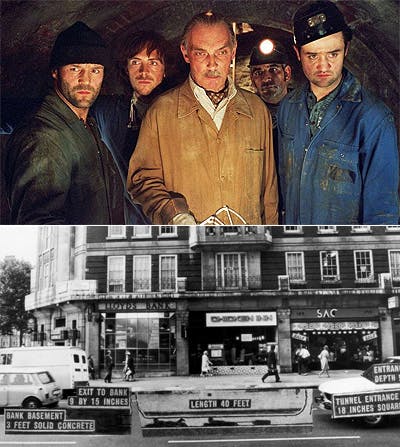Inspired:*****%20**The%20Bank%20Job%20(2008?auto=format&w=1440&q=80)
Heist Date: The evening of September 11, 1971.
Location: Lloyds Bank, on the corner of Baker Street and Marylebone Road, London.
Takings: £3m
The Perpetrators: Anthony Gavin, Thomas Stephens, Reginald Tucker, Benjamin Wolfe
Motive: Political / Blackmail?
The Story: The gang had rented a leather goods shop, Le Sac, two doors from the bank, and tunnelled about 15 meters beneath the intervening Chicken Inn restaurant. They cut through the reinforced concrete floor with a combination of explosives and a thermic lance.
The group communicated with a look out via walkie-talkie. Their communications where accidentally picked up by a radio ham, Robert Rowlands, who was trying to chat with friends in Australia. Rowlands tipped off the police, who initially thought it was a hoax, and couldn't identify which bank was being robbed after checking 700 branches. The gang supposedly escaped on Sunday lunchtime, which baffled bank security staff, as all alarms where supposedly intact.
Later inspection showed that the gang had gained entry through a 15" hole. This prompted speculation that a child or a woman had been involved in the heist. A woman's voice had been picked up in the intercepted radio transmissions.
Fun Facts:
- Legend has it that after four days of frantic news coverage about the robbery, the story was killed by authorities issuing a "D Notice". This demanded that reporting be discontinued in the interest of national security.
- Thanks to Robert Rowlands, it became known as the "walkie-talkie bank job".
- The first snippet of dialogue that Robert picked up was "We've got about 400,000. We'll let you know when we're coming out. Can you hear me?"
- One of the robbers scrawled the following inside the safe, "Let Sherlock Holmes try to solve this."
- One theory of the crime states that it was motivated by the fact that one of the deposit boxes contained sexually compromising photographs of Princess Margaret. Some speculate that MI5 was involved in retrieving these images.
Inspired**:%20The%20Pursuit%20of%20D.%20B.%20Cooper%20(1981?auto=format&w=1440&q=80)
Heist Date: November 24, 1971.
Location: A Boeing 727 aircraft in the airspace between Portland, Oregon and Seattle, Washington, USA.
Takings: $200,000 in unmarked bank notes, ransom.
The Perpetrator: 'D. B. Cooper' (alias)
Motive: Financial. That, or he really liked skydiving.
The Story: Cooper boarded the aircraft, lit a cigarette and ordered himself a bourbon and soda. A little later he passed a note to Florence Schaffner, a nearby flight attendant. It read approximately, "I have a bomb. I will use it if necessary; sit next to me. You are being hijacked." He then opened his briefcase to prove the threat to Schaffner, revealing 8 red cylinders and the wiring system for what looked like a bomb.

A 1972 F.B.I. composite drawing of D. B. CooperHe dictated his demands: $200,000 in unmarked $20 bills, four parachutes and a fuel truck ready to refuel on landing. Schaffner conveyed his instructions to the cockpit. The FBI assembled ransom money from several Seattle area banks, and paid him as he'd ordered. The aircraft landed at Seattle-Tacoma Airport at 17:45 to refuel, before taking off again, headed towards Mexico City.
At approximately 20:00, Cooper jumped from the plane. At approximately 22:15, the aircraft landed at Reno Airport. The authorities surrounded the jet, and an armed search quickly confirmed that Cooper was gone.
Fun Facts:
- The criminal purchased his ticket under the alias of 'Dan Cooper', but due to a miscommunication in the news he became known as 'D.B Cooper'.
- No conclusive evidence has ever been found regarding his whereabouts or true identity.
- Though FBI investigators have insisted that he probably didn't survive the risky parachute jump, they maintain an active case file on him which is more than 60 volumes in size.
- Aircrew member Schaffner described him as polite, well-spoken and calm.
Inspired:** **The Great Riviera Bank Robbery (1976) directed by Francis Megahy, starring Ian McShane, Warren Clarke and Stephen Greif. Also, Les Égouts Du Paradis ('The Sewers Of Paradise'), a 1979 French film directed by José Giovanni, starring Francis Huster, Jean-François Balmer and Lila Kedrova.
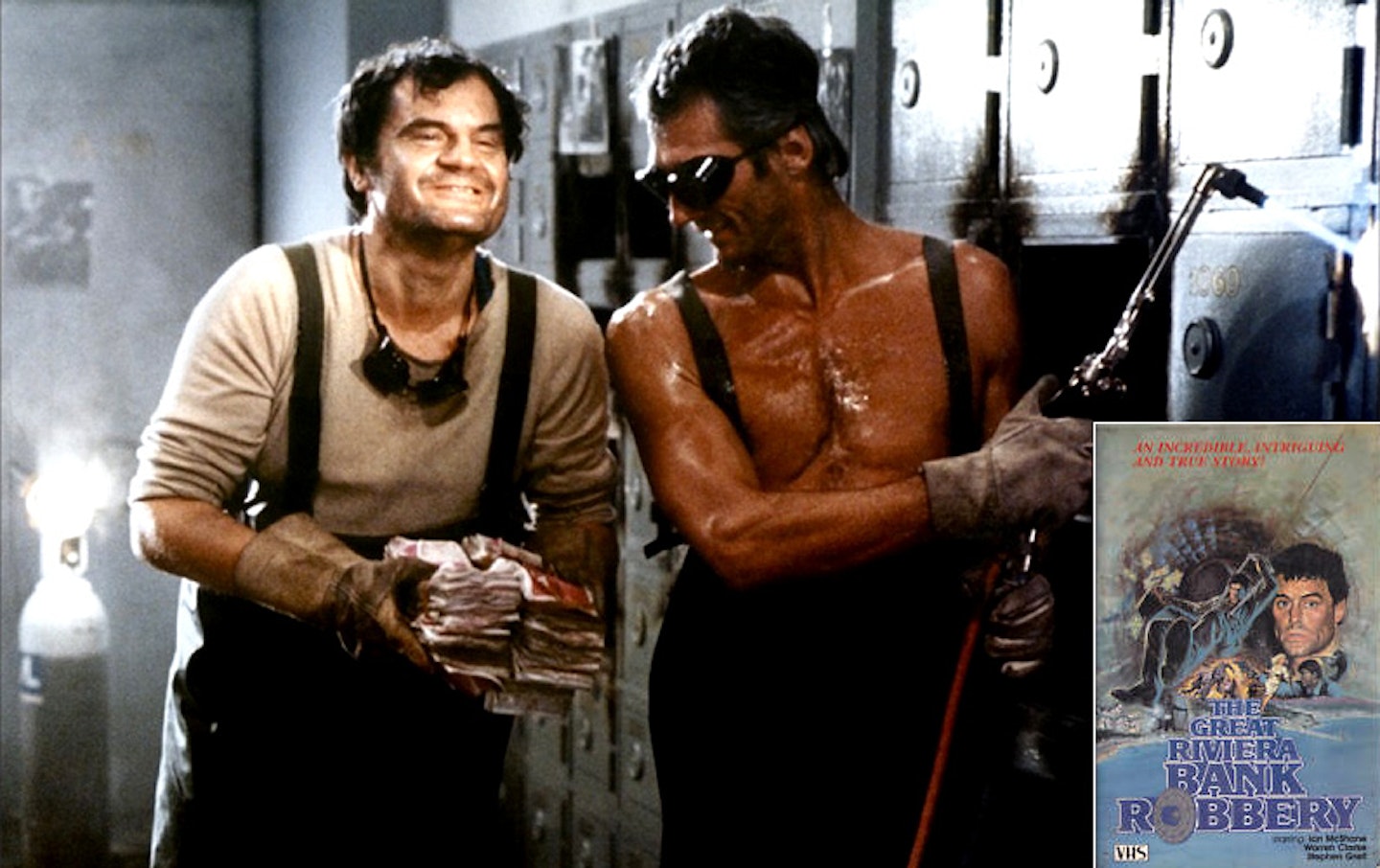
A scene from Les Égouts du paradis (The Sewers of Paradise) (1979. Inset: Poster for The Great Riviera Bank Robbery (1976)
Heist Date: July 16, 1976
Location: Société Générale bank in Nice.
Takings: 60 million francs (estimated) in money, securities and valuables.
The Perpetrator: Albert 'Bert' Spaggiari.
Motive: Political? Albert was previously an anti-colonial activist and had political motivations.
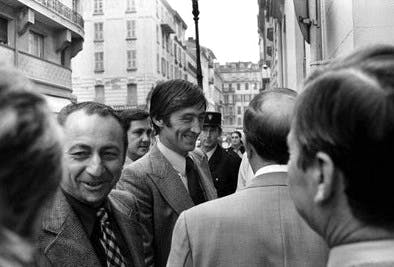The%20Story***:%20In%201976%20the%20adventurous%20Spaggiari%20(who%20had%20previously%20been%20a%20paratrooper%20and%20had%20a%20large%20criminal%20record?auto=format&w=1440&q=80)
Spaggiari then rented a box in the vault, and put a loud alarm clock there to help check for the existence of seismic detection gear. Then his men began a two-month effort to drill an eight metre tunnel from the sewer to the vault. On July 16, 1976, they broke into the vault, opening 400 safe deposit boxes and stealing around 60 million francs in valuables.
Before leaving on July 20, the gang left the following message on the walls of the vault: "Without weapons, nor hatred, nor violence." While Spaggiari was briefly arrested, he managed a spectacular escape out the window of the courthouse and onto a waiting motorbike. He remained at large for the rest of his life, and while he's said to have died in 1989, we wouldn't bet on it.
Fun Facts:
- Some accounts say that Spaggiari brought his men a luxurious meal that included wine and pâté, and that they sat in the vault for a relaxed picnic, after welding the door shut from the inside.
- Spaggiari's gang included a would-be-assassin of Charles de Gaulle, Gaby Anglade.
- Spaggiari was something of an author. He wrote a book about the break-in, 'Fric-Frac: The Great Riviera Bank Robbery', and another autobiography called 'Faut Pas Rire Avec Les Barbares' ('One Mustn't Laugh With The Barbarians').